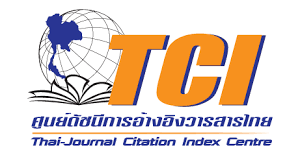Development of Microclimate Control Room using IoT System for Atmospheric Water Harvesting Research
doi: 10.14456/mijet.2022.42
Keywords:
Microclimate control room, IoT system, Atmospheric water harvesting, Computational fluid dynamicsAbstract
For testing the entire system of atmospheric water harvesting (AWH), large microclimate control room was required to provide the stable climate conditions. The objective of this work was to develop an innovative microclimate control room using IoT system to provide the realistic and stable situation for AWH research. A room with dimensions of 2.5 × 4.5 × 3 m (W × L × H) was selected. Main controller units were used to collect data from a group of temperature and relative humidity sensors and to control microclimate through the operating devices, i.e. air conditioner, heaters, humidifier and dehumidifier. Modes of the control can be selected as offline control by the control panel or online control by the IoT platform. Flow and temperature distribution were assessed by computational fluid dynamics. The desired conditions at temperature and relative humidity between 20-45 oC and 40-80%, respectively, can be maintained by the control system with high stability. The alignment of the operating devices allowed homogeneous temperature distribution. Flow distribution can be adjusted by the air guide vane of the air conditioner to provide proper conditions for different AHW types.
References
X. Zhou, H. Lu, F. Zhao, and G. Yu, "Atmospheric Water Harvesting: A Review of Material and Structural Designs," ACS Mater. Lett., vol. 2, no. 7, pp. 671–684, Jul. 2020, doi: 10.1021/acsmaterialslett.0c00130.
F. Bagheri, "Performance investigation of atmospheric water harvesting systems," Water Resour. Ind., vol. 20, pp. 23–28, Dec. 2018, doi: 10.1016/j.wri.2018.08.001.
A. A. Salehi, M. Ghannadi-Maragheh, M. Torab-Mostaedi, R. Torkaman, and M. Asadollahzadeh, "A review on the water-energy nexus for drinking water production from humid air," Renew. Sustain. Energy Rev., vol. 120, pp. 109627, Mar. 2020, doi: 10.1016/j.rser.2019.109627.
H. Kim et al., "Adsorption-based atmospheric water harvesting device for arid climates," Nat. Commun., vol. 9, no. 1, pp. 1191, Dec. 2018, doi: 10.1038/s41467-018-03162-7.
K. Yang, T. Pan, Q. Lei, X. Dong, Q. Cheng, and Y. Han, "A Roadmap to Sorption-Based Atmospheric Water Harvesting: From Molecular Sorption Mechanism to Sorbent Design and System Optimization," Environ. Sci. Technol., vol. 55, no. 10, pp. 6542–6560, May 2021, doi: 10.1021/acs.est.1c00257.
G. Raveesh, R. Goyal, and S. K. Tyagi, "Advances in atmospheric water generation technologies," Energy Convers. Manag., vol. 239, p. 114226, Jul. 2021, doi: 10.1016/j.enconman.2021.114226.
R. Peeters, H. Vanderschaeghe, J. Rongé, and J. A. Martens, "Fresh water production from atmospheric air: Technology and innovation outlook," iScience, vol. 24, no. 11, p. 103266, Nov. 2021, doi: 10.1016/j.isci.2021.103266.
Y. Tu, R. Wang, Y. Zhang, and J. Wang, “Progress and Expectation of Atmospheric Water Harvesting,” Joule, vol. 2, no. 8, pp. 1452–1475, Aug. 2018, doi: 10.1016/j.joule.2018.07.015.
Z. Chen et al., "Recent progress on sorption/desorption-based atmospheric water harvesting powered by solar energy," Sol. Energy Mater. Sol. Cells, vol. 230, p. 111233, Sep. 2021, doi: 10.1016/j.solmat.2021.111233.
R. Li, M. Wu, S. Aleid, C. Zhang, W. Wang, and P. Wang, "An integrated solar-driven system produces electricity with fresh water and crops in arid regions," Cell Rep. Phys. Sci., vol. 3, no. 3, p. 100781, Mar. 2022, doi: 10.1016/j.xcrp.2022.100781.
T. Ding, Y. Zhou, W. L. Ong, and G. W. Ho, "Hybrid solar-driven interfacial evaporation systems: Beyond water production towards high solar energy utilization," Mater. Today, vol. 42, pp. 178–191, Jan. 2021, doi: 10.1016/j.mattod.2020.10.022.
F. Gong et al., "Agricultural waste-derived moisture-absorber for all-weather atmospheric water collection and electricity generation," Nano Energy, vol. 74, p. 104922, Aug. 2020, doi: 10.1016/j.nanoen.2020.104922.
J. S. Solís-Chaves, C. M. Rocha-Osorio, A. L. L. Murari, V. M. Lira, and A. J. Sguarezi Filho, "Extracting potable water from humid air plus electric wind generation: A possible application for a Brazilian prototype," Renew. Energy, vol. 121, pp. 102–115, Jun. 2018, doi: 10.1016/j.renene.2017.12.039.
A. Scrivani and U. Bardi, "A study of the use of solar concentrating plants for the atmospheric water vapour extraction from ambient air in the Middle East and Northern Africa region," Desalination, vol. 220, no. 1–3, pp. 592–599, Mar. 2008, doi: 10.1016/j.desal.2007.04.060.
M. Mirmanto, S. Syahrul, A. T. Wijayanta, A. Mulyanto, and L. A. Winata, "Effect of evaporator numbers on water production of a free convection air-water harvester," Case Stud. Therm. Eng., vol. 27, p. 101253, Oct. 2021, doi: 10.1016/j.csite.2021.101253.
F. Fathieh, M. J. Kalmutzki, E. A. Kapustin, P. J. Waller, J. Yang, and O. M. Yaghi, "Practical water production from desert air," Sci. Adv., vol. 4, no. 6, pp. eaat3198, Jun. 2018, doi: 10.1126/sciadv.aat3198.
I. Casallas, M. Pérez, A. Fajardo, and C.-I. Paez-Rueda, "Experimental Parameter Tuning of a Portable Water Generator System Based on a Thermoelectric Cooler," Electronics, vol. 10, no. 2, pp. 141, Jan. 2021, doi: 10.3390/electronics10020141.
M. Elashmawy and F. Alshammari, "Atmospheric water harvesting from low humid regions using tubular solar still powered by a parabolic concentrator system," J. Clean. Prod., vol. 256, pp. 120329, May 2020, doi: 10.1016/j.jclepro.2020.120329.
M. Elashmawy, "Experimental study on water extraction from atmospheric air using tubular solar still," J. Clean. Prod., vol. 249, pp. 119322, Mar. 2020, doi: 10.1016/j.jclepro.2019.119322.
M. Elashmawy and I. Alatawi, "Atmospheric Water Harvesting from Low-Humid Regions of Hail City in Saudi Arabia," Nat. Resour. Res., vol. 29, no. 6, pp. 3689–3700, Dec. 2020, doi: 10.1007/s11053-020-09662-y.
C. T. Hand and S. Peuker, “An experimental study of the influence of orientation on water condensation of a thermoelectric cooling heatsink,” Heliyon, vol. 5, no. 10, p. e02752, Oct. 2019, doi: 10.1016/j.heliyon.2019.e02752.
W. He, P. Yu, Z. Hu, S. Lv, M. Qin, and C. Yu, "Experimental Study and Performance Analysis of a Portable Atmospheric Water Generator," Energies, vol. 13, no. 1, p. 73, Dec. 2019, doi: 10.3390/en13010073.
R. Munsin et al., "Feasibility Study of Atmospheric Water Harvesting by Direct Cooling in Thailand," in The 6th International Conference on Green Technology and Sustainable Development, Nha Trang University, Nha Trang, Vietnam, July 29-30, 2022.
V. Wang, A. Jadav, R. Munsin, and Y. Laoonual, "Investigation of Pre-Injection Flow Characteristics in Constant Volume Combustion Chamber (CVCC) using Computational Fluid Dynamics (CFD), " in The 5th TSME International Conference on Mechanical Engineering, The Empress, Chiang Mai, Thailand, December 17-19, 2014.
M. Rakyat et al., "Study of air distribution in tray dryer using computational fluid dynamics, " Eng. Appl. Sci. Res., vol. 48, no. 6, Art. no. 6, Jul. 2021.
Z. Zhang, W. Zhang, Z. J. Zhai, and Q. Y. Chen, "Evaluation of Various Turbulence Models in Predicting Airflow and Turbulence in Enclosed Environments by CFD: Part 2—Comparison with Experimental Data from Literature, " HVACR Res., vol. 13, no. 6, pp. 871–886, Nov. 2007, doi: 10.1080/10789669.2007.10391460.

Downloads
Published
How to Cite
Issue
Section
License

This work is licensed under a Creative Commons Attribution-NonCommercial-NoDerivatives 4.0 International License.








